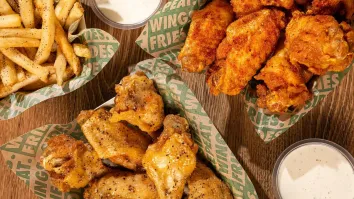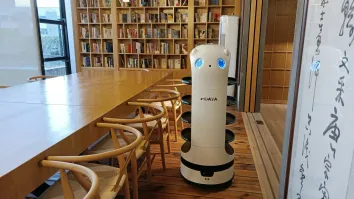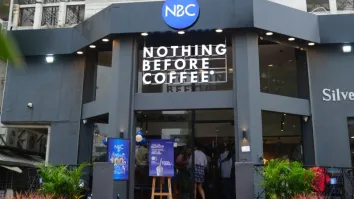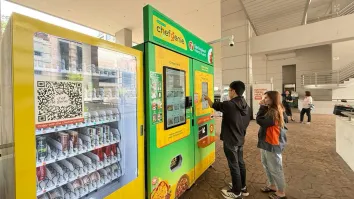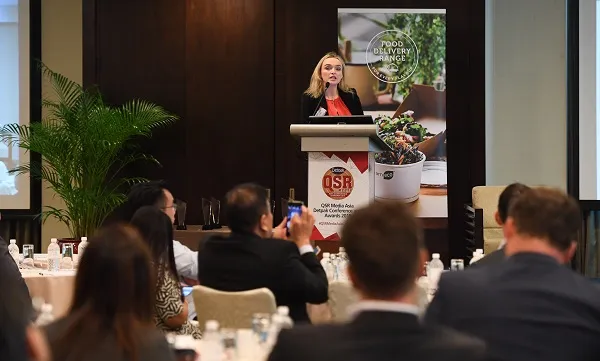
Two in three online meal orders based on promo pricing
And snacking at the office rather than lunch or dinner is the fastest growing segment for online food ordering in China.
Thinking digitally for any restaurant is much more than just the website, according to NPD Group foodservice director Ciara Clancy, who spoke at the QSR Media Asia Detpak Conference and Awards in Singapore.
“Technology is shaping all parts of our lives as well as every single step of the restaurant experience. Before you get the customer to your restaurant, they're already online researching your restaurant. They're going to check the type of cuisine that's available in the area - they're making an informed decision.”
“The digital quest doesn’t stop there. Once they get to the restaurants, whether that be in premise or virtual visits, they're going to have access more often than not on the digital menu. That digital menu is leveraged by a lot of operators to provide visual cues for the consumers, and the brands that are doing that are seeing that pay off.”
“You're getting them to upsell. You're making the consumers buy more items on the menu. They're doing it in the luxury of their own homes, they're doing it without somebody waiting behind them, or without somebody waiting to take their order. By default, you got a more relaxed consumer who's spending more in that nature,” she added.
Clancy noted that the change will happen in a faster rate as consumers link up their bank accounts to their mobile phones.
Digital Ordering in the Big 4
In the Big 4 APAC countries (China, Japan, South Korea, and Australia), digital visits are worth nearly USD$9b and contribute 1.8b visits annually. Combining the numbers of the four APAC countries, the percentage of foodservice footfall would amount to 2.4%. Digital ordering is any order that came from mobile app for delivery, mobile app for pickup, and the internet.
China has been the biggest market to adapt digital ordering across all APAC countries. It is also interesting to note that China’s mobile ordering percentage surpasses internet ordering rates. Australia will be the second best in terms of shares of digital, whilst South Korea is a bit slow to the market.
Japan has the lowest penetration of digital ordering in any country despite being one of the most technologically-advanced countries. Clancy said it comes down to a lot of things, but the biggest factor would be Japan’s culture and its ageing population. The one thing that all four countries have in common – and that's individually and combined – is that they're all seeing a double digit growth in digital ordering in the last couple of years, including Japan.
“Digital ordering is bringing double digit growth to a low growth industry. It's not a question of if it's a part of your business, but rather how much and how well you can do in this space,” says Clancy.
Millennials (18-34 years old) are core digital users across the Big 4 APAC countries with 55%, whilst Gen X (35-49 years old) have a share of 26% in the digital consumption. Gen Z (Under 18) comes in third with 11%, and baby boomers takes an 8% market share.
“Millennials are busy and time-poor and they actively look for access to quick and convenient meals. That double digit growth that you're seeing in mobile is going to continue when you take that penetration of smartphones into account, and the fact that they're typically on-the-go in a lot of countries,” Clancy said.
The Digital Meal
“If you're planning to start your restaurant, it's not enough to have a website. You must be thinking digital. It's the starting point since it's already moving to artificial intelligence.”
Technology enables more targeted promotions as 68% of consumers say their digitally-ordered meal/snack was purchased on a deal. Digital ordering is most commonly used for home consumption (41%) across the APAC Big 4, but work (36%) is gaining momentum across the region, particularly in China.
“If you're in that digital strategy area, you've got to think what you're offering is, and if you're going to make it on a higher price point than your competitors. It’s crucial to know since more than double of share is happening in that area,” Clancy said.
Big meal occasions, lunch, and dinner combine over half the digital traffic. Snacking has emerged as a consumer favourite for digital ordering with 40% of orders. Lunch takes second with 32% and dinner has a 24% market share. Breakfast got the lowest percentage of digital traffic share with 5%.
Snacking is made up of three occasions - morning snacks, afternoon snacks, and evening snacks – and they all merged to create a 60% growth contribution in the last 12 months. There are some variances by country but lunch is a common denominator, ranking second across all countries in the Big 4.
Brick and mortar restaurants start to collapse
Brick and mortar restaurants are seeing a massive pressure.
Although expectations are different for the two methods, 77% of consumers say they are more satisfied with their meal occasions when they place their order digitally compared to traditional ordering methods which have a satisfaction rate of 63%.
“The traditional brick and mortar model is completely changing and it's going to be challenged by the digital entrants. If you plan to start a brand that's only going to engage that in-dining experience, you've got to change it,” Clancy said.
“Technology is starting to address this as Google announced in a blog post that it will calculate and display wait times at sit-down restaurants, so that you can know which place will seat you immediately, and which one will have you standing around getting more and more annoyed until you wish you'd just warmed up those Chinese leftovers.
She said the number one thing that people look for when they're selecting a brand is price, speed of service, convenience, and delivery accessibility. Getting the basics right is an operator’s absolute entry point. The process that comes in after is the emotional aspect. “It's where brands can start to differentiate themselves with the quality of food.”
In 2017, delivery choices have increased in Japan with the likes of Deliveroo, UberEATS, and have spurred on a massive growth in delivery market in the last 12 months. They're now offering e-money access and the ageing population brings a surge of self-service checkouts and kiosks.
In South Korea, there is a brewing competition between aggregators like BaeMin, Yogiyo, and Baedaltong and the major brands such as McDonald's Burger King, Lotteria, Pizza Hut, Domino's Pizza, and Mr. Pizza for the delivery consumers.
NPD Group is seeing a raft of new benefits coming online. Pre-ordering services, digital couponing, and membership rewards programs are being implemented to appeal to the South Korean digital consumers. More self-serve kiosks are being installed across the major burger brands (McDonald's, Burger King, KFC, Lotteria) as minimum wage increases in South Korea.
The digital innovation in China’s foodservice has come a long way with the introduction of the new facial recognition system of Alipay – advancing that payment structure. QR code is still a big thing there. KFC China is also one of the biggest digital innovators in the country with its collaboration with Baidu in 2016 which paved way to the first KFC experiential dine-in experience in Shanghai.
Dicos, third biggest fast food brand in China, opened a waiter-free restaurant in 2017. Consumers sit down and place their orders using QR codes at the table. Food is ready in approximately 5 minutes, whilst consumers get a password through WeChat. Guests will then use their passwords to retrieve their orders from individual cupboards.
The digital progress in Australia is also evident with the digital tracking with Domino's Pizza Tracker. There’s a lot of big brands launching their apps (McDonald's KFC, Hungry Jack's, Guzman y Gomez, Red Rooster) and 2017 has seen a lot of partnerships gone underway.
What does the future hold for the QSR landscape in the Digital age?
For the new consumers, this offers a way to be a part of a new situation and increase delivery reach. Digital tools will evolve further, both in-store and off premise (e.g. artificial intelligence, robots, drones, and geo-location), and it will create a level playing field as FSR and independent operators play a stronger role in digital and delivery. Bricks and mortar model will change and in-dining occasions will become more experiential-driven, whilst excellence in execution will remain the differentiator to succeed in the digital age.


